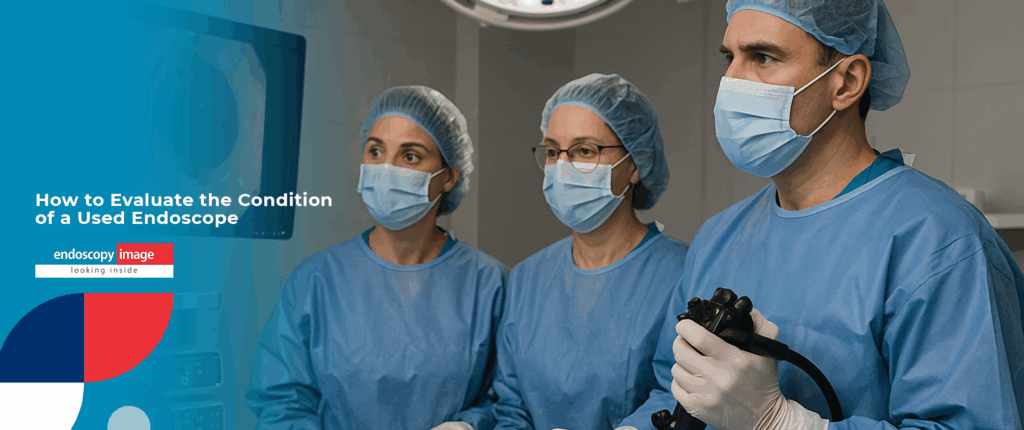Endoscopy Equipment in Mexico and Latin America: Your Complete 2025 Buying Guide
Discover the key differences between endoscopy and colonoscopy procedures. Expert guide for medical..
+1 (786) 681-5247
admin
August 1, 2025

Buying a used endoscope can be a smart move for medical professionals looking to reduce costs without compromising quality. However, it’s essential to ensure the device is in top working condition. Whether you’re a gastroenterologist, endoscopy technician, or clinic manager, understanding how to evaluate a used endoscope will protect your investment and your patients.
In this comprehensive guide, you’ll find a step-by-step technical checklist to assess the four main aspects of an endoscope’s condition: image quality, angulation, flexibility, and signs of wear. By the end, you’ll know exactly what to look for to make a safe and informed purchase.
Let’s dive into the key inspection points that every endoscopy professional should consider before buying a used scope.
Purchasing pre-owned medical equipment can save your facility thousands of dollars, but it also comes with risks if not properly vetted. A faulty endoscope could lead to:
Evaluating the device carefully minimizes these risks and ensures you’re delivering the highest quality care.
The most important performance metric of an endoscope is its image clarity. Blurry or distorted images can lead to misdiagnosis. Here’s how to inspect:
Pro Tip: A foggy image could indicate internal lens damage or fluid invasion.
Proper tip angulation is vital for accurate navigation within the GI tract. A worn or broken system can severely limit performance.
Check the following:
The insertion tube must be pliable enough to navigate anatomy but rigid enough to maintain control.
Checklist:
Warning: If the bending section feels soft or mushy, it may indicate broken internal components.
Even minor physical damage can compromise sterility or function.
Inspect:
Water-tight integrity is critical to prevent fluid invasion.
Steps:
If buying from a third party, ask for the:
Refurbished scopes are professionally restored and usually come with:
Reputable medical equipment resellers should:
Provide compatibility guidance with your existing processors
➡️ Yes, when properly refurbished and tested, used endoscopes can be safe and reliable. It's essential to buy from certified resellers who follow strict cleaning, disinfection, and testing protocols.
➡️ You should inspect image quality, angulation functionality, insertion tube wear, light transmission, and leak integrity. Request a service history and functional test report if possible.
➡️ A used endoscope can last several years, depending on its usage history, model, and maintenance. High-quality models like Olympus or Pentax, if well maintained, can offer great longevity.
➡️ Pre-owned means the scope is sold as-is, with no major repairs. Refurbished indicates the unit has been restored to manufacturer standards with replaced parts and full testing.
➡️ Yes, but only by trained technicians or authorized service providers. Using unofficial services may void warranties or compromise safety.
Evaluating a used endoscope doesn’t require an engineering degree—just a systematic approach and attention to detail. Following the checklist above ensures you’re purchasing a safe, high-quality device that meets clinical standards.
Investing a little time before the purchase can save you a lot of money and hassle later.
Discover the key differences between endoscopy and colonoscopy procedures. Expert guide for medical..
Discover the key differences between endoscopy and colonoscopy procedures. Expert guide for medical..
Discover the main types of scopes used in endoscopy and their purposes. Learn..
Unlock the power of DICOM in endoscopy: Learn how this critical standard revolutionizes..
Deprecated: File Theme without comments.php is deprecated since version 3.0.0 with no alternative available. Please include a comments.php template in your theme. in /home/endoscop/public_html/wp-includes/functions.php on line 6131